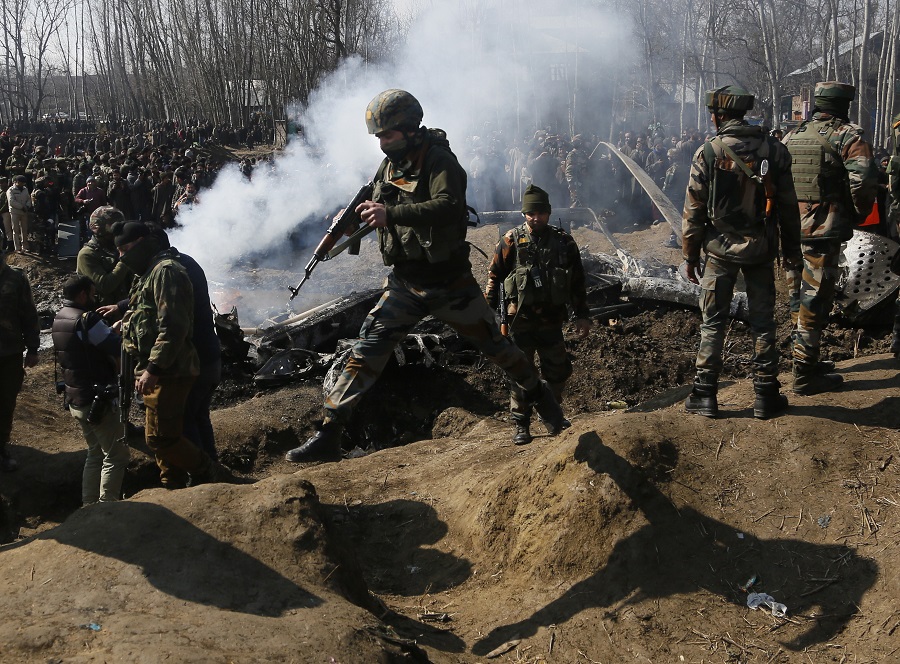Ceasefire Between India And Pakistan: A Precarious Situation

Table of Contents
Historical Context of India-Pakistan Tensions
The history of India-Pakistan relations is marred by conflict, shaped by deep-seated mistrust and unresolved territorial disputes. The partition of India in 1947, a traumatic event that resulted in mass displacement and violence, laid the foundation for the ongoing animosity. The unresolved issue of Kashmir, a region claimed by both countries, has been a persistent source of tension, leading to multiple wars and military escalations.
- Partition of India (1947): The hasty and poorly planned division of British India into India and Pakistan resulted in widespread communal violence and the displacement of millions. The unresolved issues from this period continue to cast a long shadow on relations.
- Kashmir Conflict: The dispute over the princely state of Jammu and Kashmir, which acceded to India but is also claimed by Pakistan, has been a major flashpoint since 1947. Several wars, including the Indo-Pakistani Wars of 1947–48, 1965, and 1971, have been fought over this territory.
- Kargil War (1999): This conflict saw intense fighting between the Indian and Pakistani armies in the Kargil region of Kashmir, further escalating tensions.
- 2008 Mumbai Attacks: The attacks, claimed by a Pakistan-based militant group, significantly damaged relations and led to a sharp increase in cross-border tensions.
- Pulwama Attack (2019): This suicide bombing, also claimed by a Pakistan-based group, resulted in heightened military activity and retaliatory actions, bringing the two nations to the brink of war.
These events highlight the deep-seated mistrust and the volatile nature of the Indo-Pak relationship, making the current ceasefire a delicate and vulnerable arrangement. The Kashmir dispute, in particular, continues to be the biggest obstacle to lasting peace and frequently fuels military escalation.
The Current State of the Ceasefire: A Delicate Balance
The ceasefire, while in place, is far from stable. Violations occur regularly, threatening to escalate into full-blown conflict. These violations range from sporadic cross-border firing to more significant infiltration attempts by militant groups.
- Frequency of Ceasefire Violations: Reports of cross-border firing and other violations are frequently reported in the media, indicating a fragile situation.
- Types of Violations: These range from small-arms fire to shelling and even attempts at infiltration across the Line of Control (LoC) in Kashmir.
- Impact on Civilian Populations: Civilians living in border regions bear the brunt of these violations, suffering casualties and displacement.
The instability is further exacerbated by the activities of militant groups operating along the border and the internal political dynamics within both countries. The lack of trust and the constant threat of escalation make the India-Pakistan ceasefire a precarious and uncertain situation requiring constant vigilance.
International Involvement and Diplomatic Efforts
Several international actors have played a role in mediating the conflict or attempting to de-escalate tensions between India and Pakistan. However, progress has been slow and often hampered by the deep-seated mistrust between the two nations.
- UN Security Council Resolutions: Numerous resolutions have called for a peaceful resolution of the Kashmir dispute, but implementation has proven difficult.
- Diplomatic Initiatives: Countries like the USA and China have engaged in diplomatic initiatives, attempting to foster dialogue and de-escalate tensions. However, these efforts have often yielded limited success.
- Peace Talks: Several rounds of peace talks have taken place over the years, but progress has been hampered by disagreements over the core issues and a lack of trust.
The effectiveness of international involvement remains limited due to the complex nature of the conflict and the reluctance of both India and Pakistan to compromise on their core positions. The international community's continued engagement is vital but requires a more robust and comprehensive approach.
Potential Pathways Towards Lasting Peace: Challenges and Opportunities
Achieving lasting peace between India and Pakistan requires a multi-faceted approach focusing on addressing the root causes of the conflict and building trust between the two nations.
- Dialogue and Diplomacy: Sustained and meaningful dialogue is essential to address the underlying issues and build confidence.
- Confidence-Building Measures (CBMs): Implementing CBMs, such as increased communication channels and joint initiatives, can help reduce tensions and foster cooperation.
- Addressing the Root Causes of Conflict: The Kashmir dispute needs a just and lasting solution through meaningful dialogue and compromise, respecting the will of the Kashmiri people.
- Economic Cooperation: Enhanced economic ties can create mutual benefits and foster interdependence, reducing the incentive for conflict.
However, significant challenges remain. Deep-seated mistrust, historical grievances, and the involvement of militant groups continue to hinder progress. Despite these obstacles, opportunities for progress exist, particularly through focused diplomatic efforts and a commitment to peaceful resolution from both sides.
Conclusion
The ceasefire between India and Pakistan remains a precarious situation, shaped by a complex history of conflict and fueled by ongoing disputes, primarily the Kashmir issue. While international efforts and diplomatic initiatives are crucial, lasting peace requires addressing the underlying issues and building trust between the two nations. The need for sustained dialogue, confidence-building measures, and a commitment to peaceful resolution is paramount for achieving a lasting and stable peace in the region. Understanding the intricacies of the India-Pakistan ceasefire is crucial for all those concerned about regional stability and the prevention of future conflict. Let's continue the discussion on how to ensure a more durable ceasefire between India and Pakistan, and work towards lasting peace in South Asia.

Featured Posts
-
 The Hobbit The Battle Of The Five Armies Characters Battles And Legacy
May 13, 2025
The Hobbit The Battle Of The Five Armies Characters Battles And Legacy
May 13, 2025 -
 Sobolenko I Skandal V Madride Kommentarii I Posledstviya
May 13, 2025
Sobolenko I Skandal V Madride Kommentarii I Posledstviya
May 13, 2025 -
 Sec Crypto Broker Rules Face Overhaul Chairman Atkins Announcement
May 13, 2025
Sec Crypto Broker Rules Face Overhaul Chairman Atkins Announcement
May 13, 2025 -
 Cronica Atalanta Venezia Partido Sin Goles
May 13, 2025
Cronica Atalanta Venezia Partido Sin Goles
May 13, 2025 -
 Lywnardw Dy Kapryw W Adryn Brwdy Dr Mdhakrh Bray Aywl Knywl
May 13, 2025
Lywnardw Dy Kapryw W Adryn Brwdy Dr Mdhakrh Bray Aywl Knywl
May 13, 2025
